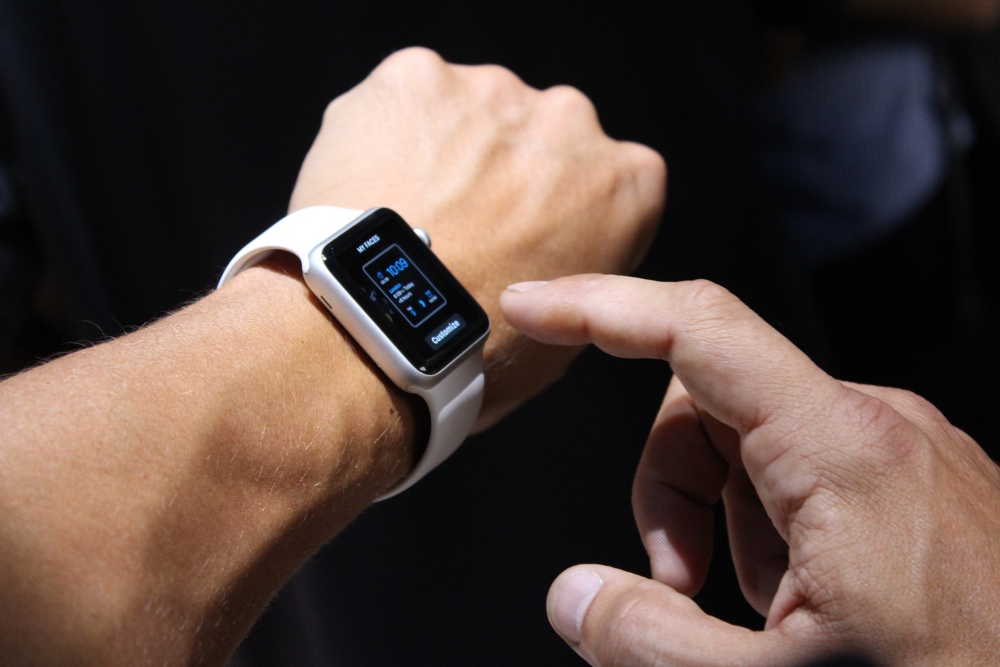
Apple Watch Is A Two-Handed Device
Not everyone at Fast Company is willing to give Apple Watch a fair shake, but Harry McCracken has put together a thoughtful list of first impressions that would make Jefferson Graham blush (if he had a conscience). While McCracken didn’t fully research the nuances of Apple’s new wearable before diving in, he addresses its merits and shortcomings thoughtfully. They’re all worth reading, but this particular observation is most compelling:
THIS IS A TWO-HANDED DEVICE.
Maybe this should have been obvious all along, but it didn’t dawn on me until I was out and about with an Apple Watch on my wrist. If you’re standing on the subway holding a briefcase or backpack—a scenario I find myself in regularly—using the Apple Watch to do anything beyond glancing at the time and incoming notifications is going to be tricky. Other than that, though, it should be especially useful as a walking-around computing device—that’s when I find other smartwatches most valuable.
I agree. I also disagree.
As a device, it’s perfectly fair to characterize Apple Watch as simultaneously hands-free, one-handed, and two-handed. For notifications, the interface requires a mere move of the arm to present (or dismiss) the included information. I consider this to be an example of hands-free interaction. Sure, you’ve got to raise your wrist, but your hand itself is still free to stay more or less occupied with whatever its doing. You won’t have to put down your pen or your Coke or your game controller. This is especially useful while using Apple Watch behind the wheel. Fittingly, there’s finally a clock that helps keep your hands at 10 and 2. (Or 9 and 3 if you don’t want the airbag to sever your arms at the elbows. And you don’t, because then where will you wear your Apple Watch?)
Per McCracken’s briefcase-on-the-subway example (I’m ignoring his backpack-in-the-hand example for obvious reasons, since, you know, it’s a backpack), I see no functional reason you couldn’t hold said satchel in your Apple Watch hand and activate the various functions of the wearable at the same time. It might be a little heavy, but most people ignore shoulder day anyway, and this would be a convenient way to blast those delts during that otherwise uneventful commute. Perhaps in the future, Apple Watch’s fitness suite will track this specific workout.
All that said, there will certainly be the rare occasion where Apple Watch requires both of your hands to get something done. While I personally haven’t encountered this scenario yet, I can imagine events that just don’t lend themselves to the nonchalance of a flick of the finger. However, those moments will likely come in the early days of ownership, when your learning curve — and its requisite necessary concentration — will force both hands to the unit. Since I’m not too interested in shattering the tiny computer, putting the thing on and taking it off are the only times I really need both hands to be otherwise unoccupied.
And unoccupied is the key. Because with Apple Watch, even most tasks that require both hands leave at least one of them more or less able to hang on to that thing you really don’t want to put down. If I’ve got my iPhone in my hand and my Apple Watch taps me on the wrist, I don’t have to put away the handset to see what’s up.
The same way Apple Watch lets you keep your iPhone in your pocket, it similarly lets you keep it — or almost anything else — in the palm of your hand.